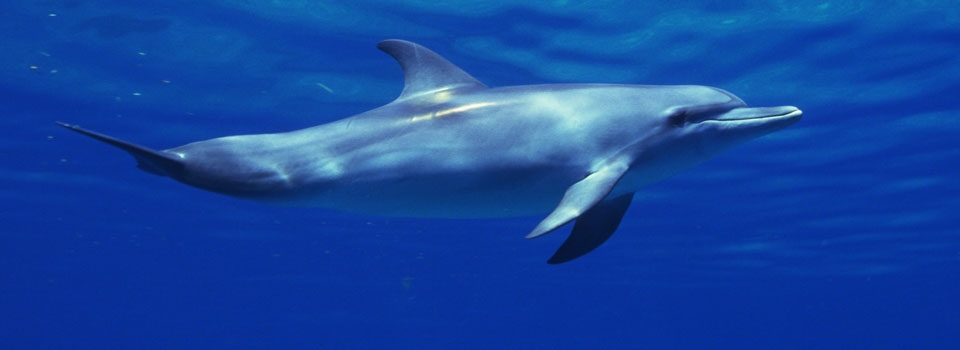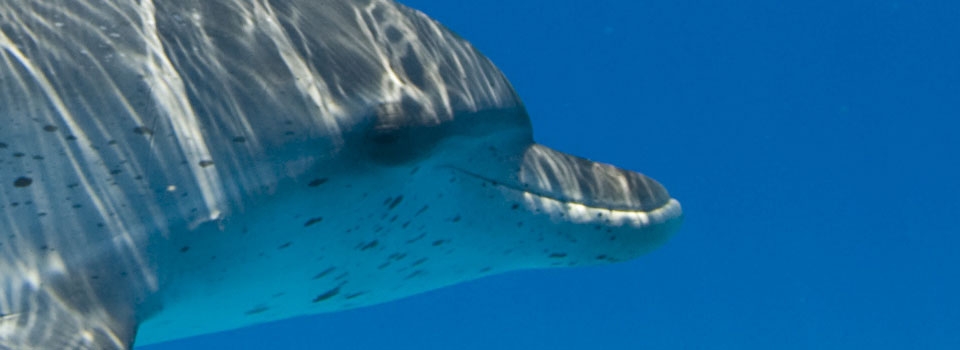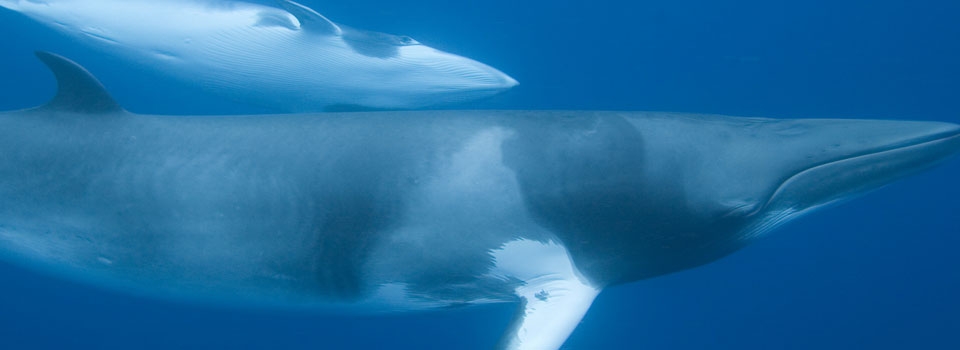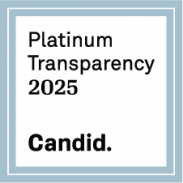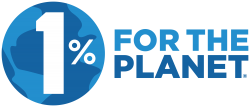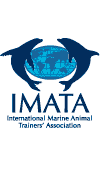- RESEARCH
- LEARN
- Child Education »
- Teen Education »
- Adult Education »
- Resources »
- Threats to Dolphins & Whales »
- Kids Zone »
- SHOP

- Providing Sanctuary and a Forever Home since 1984.
- A not-for-profit 501(c)3 marine mammal education and research facility for more than 35 years.
- Providing Sanctuary and a Forever Home since 1984.
A not-for-profit 501(c)3 marine mammal education and research facility for more than 35 years.
The Challenge
The Challenge
As humans we are one of the most advanced life forms on Earth – at least in terms of the impact we have on our planet and those with whom we share it. We have a responsibility to consider our actions and to modify them when necessary. Our planet is misrepresented by its title, Earth. Living on a planet with 75% of its surface under water, we might consider a more appropriate name, like "Planet Ocean"! Some of our planet's most beguiling creatures live in the ocean, including dolphins, porpoises, and whales. These animals are threatened by human action. In some cases these animals are killed indirectly, as in fishing nets. Some cultures slaughter dolphins and whales directly, hunting them for food, bait, or sport. By far the most serious threat to dolphins, porpoises and whales comes in the form of pollution: both marine debris and invisible toxins we create every day.
Cetaceans are intelligent, air breathing, highly evolved mammals with complex societies and systems of communication. Some species are curious about, and friendly towards, people, and we in turn are charmed by their beauty and grace. Yet careless and destructive practices and a lack of respect for our Planet Ocean may cause many species to disappear forever.
It is not too late for humans to learn to live responsibly, allowing the continued survival of all creatures and the continued health of this planet. The task is great, but not insurmountable if we each consider the influence we have in our personal lives and how much we can accomplish together. Each one of us can make a difference if we are willing to take an active role. The plight of the dolphin is representative of the status of all life on our Ocean planet; humanity is part of that life. If we save the dolphins, we also are saving ourselves.
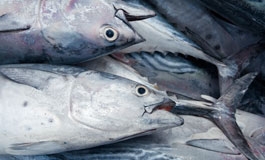
Pollution Problem
The Pollution Problem
Marine debris is anything from a discarded sandwich bag to a lost fishing net. Every ocean in the world is littered with some form of debris, which resembles food for marine life. Many animals accidentally eat marine debris causing internal injury, intestinal blockage, and starvation.
Getting tangled up in floating debris is another serious and growing problem for marine mammals. Entanglement is an especially serious threat to young marine mammals that tend to be curious and careless. Once a young animal becomes entangled, it dies a slow and painful death as its growing body is restricted by debris.
At least 43% of all marine mammal species and 44% of all seabird species become entangled in or ingest marine debris each year. Some of these include the most endangered marine species in U.S. waters: Hawaiian monk seals, hawksbill and green sea turtles, West Indian manatees, and right whales.
Almost everything we use has the potential to become marine debris, from the bottle of milk in the refrigerator to the refrigerator itself. The largest sources of marine debris are runoff from land-based sources, such as storm sewers and parking lots, and ocean-based sources like discarded gear from fishing boats. That means that the garbage we create each day is most likely what will end up in the oceans affecting dolphins, whales, and other marine life.
Toxins enter the marine environment through land-based runoff and air pollution as well as ocean dumping. Things we use every day, like automobiles, air conditioners, and household products, create many toxins. Researchers routinely find high levels of toxins in the blubber of stranded marine mammals.
For years we dumped heavy metals and organic pollutants into our oceans thinking it was a resource so vast it could absorb any and all materials. It now seems that the oceans are finally becoming saturated. The evidence is in the marine life itself. Fish, turtles, and, most recently, dolphins are now growing cancerous tumors. There is also evidence that pollution in our oceans is weakening the immune systems of marine mammals.
Polychlorinated biphenyls (PCBs), which are linked to immune system suppression and reproductive failure, exist in extremely high levels in the blubber of dead dolphins and whales in many parts of the world. PCBs are a form of industrial waste now illegal in the United States, but they are still leaching into our waterways from landfills.
With suppressed immune systems, dolphins may succumb to bacterial and viral infections they could otherwise fight off. Morbillivirus is the virus that causes distemper in dogs and measles in people. It is believed that dolphins become susceptible to morbillivirus because toxins in their environment compromise their immune systems.
The Armed Forces Institute of Pathology implicated morbillivirus infection as a primary factor in the deaths of more than 700 bottlenose dolphins along the U.S. mid-Atlantic coast in 1987-1988, more than 17,000 harbor seals in the North Sea in 1988, and more than 1,000 striped dolphins in the Mediterranean Sea in 1990-1991. Researchers also discovered a strain of morbillivirus in bottlenose dolphins in the Gulf of Mexico. (There is no evidence that the strains of morbillivirus infecting marine mammals can infect people.)

Personal Choices
Personal Choices
Think about everything you do in relation to how it might affect the ocean, and ultimately dolphins. Each day you have the opportunity to choose, and to change your behavior. Do not support the production of wasteful or harmful products by contributing to the demand for them. Support responsible manufacturers by choosing their products -- even if it means spending a little more. By using recycled or recyclable items, buying in bulk instead of many little packages, and, whenever possible, simply reusing what you can, you can significantly reduce the amount of waste YOU create. For example, if all our newspaper was recycled we could save about 250,000,000 trees each year. You can walk one mile along an average highway in the United States and see about 1,457 pieces of litter.
Industry creating large-scale pollution is not the greatest cause of the ocean's decline. Industry responds to the needs of consumers; namely you and me. No matter where you live, your personal choices affect the health of the oceans. Americans use an incredible amount of plastics, most of it for packaging. Currently only about 3% of the plastic waste stream is recycled. Where does the rest of it go? It is believed that hundreds of millions of pounds of plastics are lost or dumped into the oceans each year. Out of every $10 spent on buying things, $1 (10%) goes for packaging that is thrown away. Packaging represents about 65% of household trash.
Household chemicals that go down your drain, and toxic chemicals commonly used for weed and pest control for your lawn, can contribute to groundwater contamination and eventually affect the health of our oceans. The average American home generates 20 lbs of household waste annually that contains hazardous material. 5-15% of what we throw away contains hazardous material. Devastating pollution also comes from the manufacture of plastics and other products we use at home, such as oven cleaner, furniture polish, and laundry soap.
Sewage and runoff from excess fertilizer feeds the growth of algae, which not only produce toxins, but also rob the water of huge amounts of oxygen needed by other forms of aquatic life to survive. Anything that upsets the delicate balance of the natural food web can ultimately destroy those species at the top: dolphins, whales, and humans.
Certain chemicals such as DDT and PCBs disrupt biological processes and cause widespread sterility, cancers and genetic abnormalities in populations of land animals. Our lack of scientific knowledge about the normal levels and effects of biological and chemical toxins, and about bacterial and viral infections in fish and marine mammals, limits our efforts to understand or prevent die-offs.
Husbandry records on dolphins in human care are of critical importance both for monitoring the health of individual animals and for building baseline data on what is normal for a healthy dolphin. Only by establishing such norms can we accurately assess the condition of marine mammals that strand or wash up dead on our shores.
We also must continue to gather information on contaminants and their effects on marine species. High standards for clean air and water must be established and maintained globally, and each of us must examine our personal habits to evaluate the effect we are having on the environment. Remember, what affects dolphins, affects us.
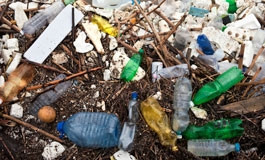
Direct Threats
Direct Threats
While the thought of purposely killing a dolphin, porpoise, or whale may seem foreign to many people, it is common practice in some parts of the world. There are several reasons why cetaceans are hunted: for food, for bait, for sport, or for elimination.
Whaling is probably the most well known form of hunting, and one that not only still exists, but also is on the rise again worldwide. By the 1970s the bowhead whale, right whale, blue whale, humpback whale, and gray whale were nearly extinct due to overexploitation by whalers. Only the gray whale has fully recovered from the heyday of whaling. The original 39 member nations of the International Whaling Commission (IWC), established to manage the harvest of whales, adopted a voluntary ban on whaling in 1982. It went into effect during the 1985-1986 commercial whaling season. Several member nations were issued permits for "research whaling" after 1982 and continued to harvest whales. Research whaling, unfortunately, produced no significant data and is widely recognized as an excuse for continued commercial whaling.
In 1994, Norway resumed commercial whaling, against the recommendation of the IWC, and continues to increase its take of minke whales each year. Japan and Russia continue to harvest whales for research against recommendations of the IWC. Russia, Canada, Iceland, Norway, Japan, and the United States, among others, allow subsistence whaling for aboriginal people.
In some cases, interest in whaling is the result of the depletion of other marine resources. Where fish stocks have failed, some nations turn to cetaceans as the next most logical resource to exploit. Because cetaceans do not reproduce the way fish do, it is not possible to harvest them at the same rate and allow the species to perpetuate. This basic principle of biology is not understood in areas where dolphins and other small whales are routinely caught.
In areas of South America, Japan, and Indonesia, coastal whaling for small cetaceans is prevalent and unregulated. Populations of small coastal whales, dolphins and porpoises primarily, may disappear in the near future due to lack of awareness and absence of regulation. In South America small cetaceans are cut up and used for bait in the lucrative snow crab fishery. In Japan and Indonesia, coastal whaling provides a food source for a dense and hungry population.

Indirect Threats
Indirect Threats
Dolphins and the Tuna Fishing Industry
What are the problems and how have we tried to fix them?
The trouble for dolphins is that mature yellowfin tuna in the Eastern Tropical Pacific Ocean (ETP) swim beneath their pods. Both tuna and dolphin are predators that eat squid and small fishes. They do not seem to compete for food or cooperate with each other. It is uncertain why, only in this area, this unique relationship exists between schools of mature yellowfin tuna and spotted, spinner, and common dolphins. In the late 1950s fishermen began using dolphins, easily visible on the ocean's surface, to locate tuna swimming underneath. Purse seines, the nets used to catch yellowfin tuna, encircle dolphins in a procedure called a 'set.' Once the set is complete the net is 'pursed' closed, capturing both tuna and dolphins.
During the early years of purse seining, tens of thousands of dolphins routinely drowned in nets – over 350,000 each year! Concern over the high number of dolphin deaths helped inspire the Marine Mammal Protection Act (MMPA) of 1972, which restricted the killing of marine mammals. U.S. vessels, required to obey the MMPA, stopped killing so many dolphins.
The MMPA changed in 1984 and again in 1988, allowing only nations with strict tuna/dolphin programs to sell their tuna in the U.S. Fishermen responded by working to reduce dolphin deaths mainly by 'backing down' their nets after encircling the dolphins. Dolphins escaped over the lowered back end of the net before it closed to capture the tuna.
U.S. consumers concerned about dolphins started boycotting tuna in the late 1980s. In response to public pressure, major canneries stopped buying tuna caught using nets set around dolphins. In 1990 legislation passed requiring a "dolphin-safe" label on tuna. Consumers considered their battle won.
Is "Dolphin-safe" tuna protecting dolphins?
Dolphin-safe tuna is caught without encircling dolphins. Dolphins may die in different types of nets outside the ETP to provide tuna labeled dolphin-safe. Alternative fishing practices in the ETP include encircling logs and other floating objects, or encircling free swimming schools of tuna. Unfortunately these practices kill many other species – all thrown away dead – including large numbers of shark, wahoo, billfish, endangered sea turtles, dorado, and immature yellowfin tuna. All of these species, along with dolphins and many other creatures, make up the ecosystem of the ETP.
Tuna labeled "dolphin-safe" is not ecosystem-safe! If a practice is not safe for the ecosystem, of which dolphins are a part, then it is not safe for dolphins.
Is there a way to protect dolphins and their ecosystem?
Protecting dolphins and their ecosystem required negotiations between nations fishing in the ETP, the tuna industry, and concerned environmental organizations. The U.S. wanted to reward foreign nations for their efforts to stop killing dolphins, but they could not buy tuna from foreign nations, unless laws changed. Representatives from environmental groups, the Inter-American Tropical Tuna Commission, and 13 nations fishing in the ETP met in 1995 to formalize previously voluntary efforts. They formed an agreement called the Panama Declaration.
In August of 1997 the Panama Declaration became part of U.S. legislation. It allows the U.S. to buy tuna from foreign fleets who work hard to avoid killing dolphins. It also makes once voluntary actions mandatory. All fleets must continue researching safer fishing methods for dolphins and the marine environment. Foreign nations can now sell dolphin-safe tuna, as well as tuna caught by encircling dolphins, in the U.S.
The Panama Declaration included a proposal to change the definition of the dolphin-safe label. The proposed new definition would have allowed tuna to receive the dolphin-safe label no matter what fishing method was used to provide the tuna, as long as it did not result in a single dolphin death. An observer on each vessel would watch every set to be sure not a single dolphin died. This change faced much opposition because it would allow tuna to receive the dolphin-safe label even though the fishermen may have chased or intentionally encircled dolphins. After a study analyzing the adverse effects of these practices, as well as numerous legal appeals, a final ruling on August 9, 2004, decided that the definition of the dolphin-safe label would not be modified.
Should I stop eating tuna?
Although unlabeled tuna can be sold in the U.S., consumers already proved their unwillingness to purchase it. Foreign nations will most likely only export tuna considered dolphin-safe by U.S. law. However, these laws only protect dolphins, and ignore all the other species that are killed as bycatch. Decide if the life of one dolphin is worth that of thousands of other sea creatures before buying dolphin-safe tuna. When the time comes to redefine dolphin-safe, remember that the needs of dolphins connect to the health of their environment.
If anything is clear, it is that in order to affect long-range improvements in how we impact dolphins, it is necessary to think globally and consider the international implications of our decisions. It is also clear that there are no simple answers, and our responsibility is to continue to educate ourselves and look for the best ways to maintain a balanced and healthy ecosystem worldwide.
DOLPHINS, PORPOISES, WHALES AND OTHER FISHERIES
Gillnets, used in shallow coastal waters, are two miles long or less and made of finely woven monofilament nylon designed to snag the gills of fish, preventing escape. Most are deployed at night; even animals that use echolocation often do not detect the nets. Virtually everything that blunders into these nets becomes entangled and dies.
Gillnetting is banned in North and South Carolina, Georgia, Texas, California, and Florida. In the Pacific Northwest and the Atlantic Northeast, gillnetting is still used to harvest inshore schooling fish. Fishermen and environmentalists are working together in these areas to find ways to perpetuate their fishery without harming non-target species, especially the harbor porpoise. Harbor porpoise populations on the North Atlantic coast declined dramatically as a result of gillnetting. Recently developed technology targeted at warning porpoises away from nets seems to be working allowing fishermen to maintain their livelihood without decimating harbor porpoise populations. Studies have found that harbor porpoises and Hector's dolphins appear to avoid areas with pingers (Stone et al. 1997, Culik et al. 2001).
High seas driftnet fishing in the 1980s gave rise to global concern for the ocean ecosystem. These nets are essentially long gillnets approximately 40 feet deep and extending up to 40 miles. They kill millions of marine animals indiscriminately. Public outcry prompted the United Nations to institute a voluntary ban on high seas driftnetting in 1992. Most nations cooperated well by imposing regulations on fishing fleets. For example, Japan no longer licenses vessels for driftnet fishing. Japan compensated fishermen for the loss of income, and initiated an enforcement plan to end illegal driftnetting. South Korea also suspended all driftnetting, and allocated funds for scrapping or refitting driftnet vessels. Taiwan required that, in order to obtain 1993 fishing licenses, all driftnets be surrendered. They also instituted a vessel buy-back program, offered low-interest loans for refitting vessels, and deployed patrol vessels.
In the North Atlantic and Mediterranean Oceans, driftnets catch billfish, albacore, and other species. The European Community Council of Fisheries Ministers adopted regulations restricting the length of driftnets to 2.5 kilometers. Although Italy and some other nations may illegally fish with nets longer than 2.5 kilometers, the Italian government continues to subject violators to fines, suspension of fishing licenses, and confiscation of nets and fish.
Any form of fishing involves the risk of unintentionally catching non-target species. Unless the world stops consuming seafood, an excellent source of protein and the primary food source of some nations, there will always be some concern about bycatch. By staying informed about existing practices and their potential impact, encouraging continuing research into safer fishing methods, and rewarding the efforts of commercial fisherman who strive to be more responsible, we can hopefully sustain marine life as a renewable resource.
Trawlers, used to catch schooling fish such as cod, pollock, sole and other groundfish, operate in the middle and on the bottom of the water column. In the north Atlantic the once-famous cod fishery no longer exists due to overfishing. Huge factory trawlers, capable of harvesting and processing thousands of pounds of fish daily, depleted fish stocks. In Alaskan waters, where about 50 of these trawlers still operate, more than 580 million pounds of dead fish are discarded annually as bycatch. The depletion of pollock stocks threatens populations of endangered Steller Sea Lions.
As factory trawlers exhaust their options in one area, they move on to new grounds and repeat the devastating overfishing process. In New England, where a traditionally lucrative herring and mackerel fishery supports many local commercial fishermen, stocks are threatened by an influx of factory trawlers. As much as 90% of New England’s herring catch comes from the Gulf of Maine, where a variety of whales, porpoises, and seals rely on these and other fish exploited by fisheries.
While entanglement in fishing gear is an obvious threat to dolphins, whales, and other marine mammals, a more insidious and potentially more catastrophic danger, is the destruction of their food web. The worldwide collapse of fisheries is well documented, and more recently, widely publicized. As we continue to try harvesting the seas in a responsible and renewable way, we must remember to consider the needs of marine animals that survive on the foods we desire.
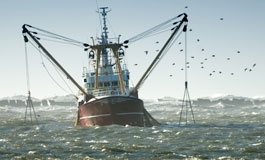
You Can Help
You Can Help
Make a difference by staying informed about current environmental issues and by educating those around you. You have the power to make this planet a better place to live for dolphins as well as humans.
Contacting your congressperson is an extremely effective way to help create change. Telephone calls have the most impact, but email, postal mail, and faxes are also very important. Be sure, if you choose to make your voice heard, that you know what you are saying. Doing your homework on issues you feel strongly about is absolutely essential before lending your support, or opposition, to any cause.
When writing to your Senator or Representative, be concise; make it less than one page, two paragraphs are best. In the first paragraph identify yourself, your affiliation, and your major concern. Use your second paragraph to explain why your concerns are important and worthwhile. End your letter with your postal address. Senators and Representatives are concerned about keeping their own constituents happy! Try to put each letter in your own words and be formal and to the point. Be personal, but not insulting.
Congressional Contacts
Capitol Switchboard: (202) 224 3121
To check the status of Bills in the House & Senate: (202) 225-1772
President’s email: president@whitehouse.gov
Vice President’s email: vice-president@whitehouse.gov
To find your local Representative and Senator: www.visi.com/juan/congress/
To address your letter use the following format:
The Honorable (your senator) The Honorable (your representative)
U.S. Senate U.S. House of Representatives
Washington , D.C. 20510 Washington, D.C. 20515
Maintain contact with, and support, trusted and reputable environmental organizations such as:
Dolphin Research Center
58901 Overseas Hwy
Grassy Key, Fl. 33050
www.dolphins.org
The Ocean Conservancy
1300 19 th Street NW
8 th Floor
Washington, D.C. 20006
www.oceanconservancy.org
IUCN - International Union for Conservation of Nature and Natural Resources
Rue Mauverney 28
Gland
1196
SWITZERLAND
www.iucn.org
World Wildlife Fund
1250 24 th Street NW
PO Box 97180
Washington, D.C. 20090-7180
www.wwf.org

References & Sightings
References and Sightings
References
The American Cetacean Society. 1990. They're Not Saved Yet, Proceedings of the Fourth Biennial Conference, Monterey, California. The American Cetacean Society, San Pedro, CA.
Brownell, R. 1989. "The Plight of the Forgotten Whales," Oceanus, 32(1):5. Woods Hole Oceanographic Institution, Woods Hole, MA.
Center for Marine Conservation. 1990. Dolphins: Species in Critical Danger. Center for Marine Conservation, Washington, DC.
Center for Marine Conservation. 1990. Threats Facing Dolphins in the 1990's.
Center for Marine Conservation, Washington, DC.
Donoghue, Michael and Anne Wheeler. 1989. Save the Dolphins. Sheridan House: NY.
Faast, Susan, and Laura Urian. 1994. "What You Can Do to Save Dolphins...And the Environment We Share." Available from the Dolphin Research Center, 58901 Overseas Hwy, Grassy Key, FL 33050.
Hofman, Robert J. 1989. "The Marine Mammal Act: A First of Its Kind Anywhere," Oceanus, 32(1):21. Woods Hole Oceanographic Institution, Woods Hole, MA.
May, John, ed. 1990. Greenpeace Book of Dolphins. Sterling: NY.
National Research Council. 1992. Dolphins and the Tuna Industry. National Academy Press: Wachington DC.
Norris, Kenneth. 1992. "Dolphins in Crisis," National Geographic, 182(3): 2-35. National Geographic Society, Washington, D.C.
Payne, Roger. 1990. "Threats to the Survival of Whales and Dolphins," Animal Welfare Institute Quarterly, 39(2).
Perrin, W.F. (compiled by). 1988. Dolphins, Porpoises, and Whales: An Action Plan for the Conservation of Biological Diversity: 1988-1992. Available from IUCN Publications Services, 219C Huntington Rd., Cambridge CB3 ODL, UK.
Sightings
Copyright © 2007 Dolphin Research Center
Information Can Be Used with Proper Citing
Dolphin Research Center, 58901 Overseas Highway, Grassy Key, FL 33050-6019
305-289-1121 www.dolphins.org
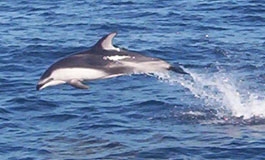
Our Mission -
Through education, research and rescue, Dolphin Research Center promotes peaceful coexistence,
cooperation and communication between marine mammals, humans and the environment we share with
the well being of DRC's animals taking precedence.
